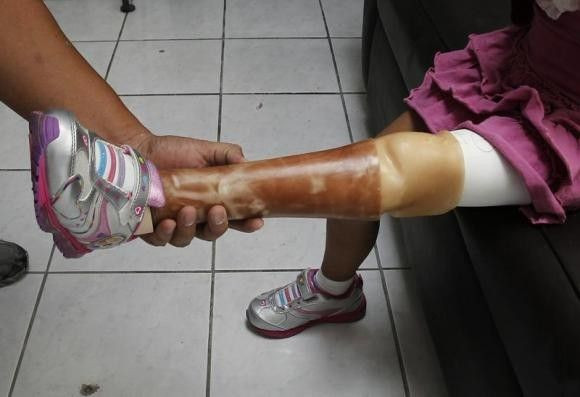Polymer that Stretches and Senses like a Real Skin

A synthetic material with sensory abilities has been developed by a team of US and South Korean scientists. This polymer can be added to prosthetic limbs to enable the user to sense heat, pressure and moisture. Moreover, the material is elastic, and so it allows finer movements.
Dense networks of sensors made of very thin gold and silicon fibres are implanted into the polymer. Stretchable silicon has been developed in almost a decade ago, but this recent creation was designed to enable sensation in artificial limbs. It has around 400 sensors per square millimetre. Also, the material has a layer of actuators for it to have the same warmth as human skin.
Dr Roozbeh Ghaffari, one of the researchers for this technology, explains, "If you have these sensors at high resolution across the finger, you can give the same tactile touch that the normal hand would convey to the brain." He also heads the advanced technology development at MC10, a startup in Cambridge, Massachusetts, that develops wearable products based on flexible, sensor-laden materials.
The synthetic skin is another step forward in the development of prosthetic devices. However, a bigger challenge has to be undertaken. These artificial limbs have to be connected to the wearer's nervous system to have an actual feel of what is being sensed. Scientists at the Seoul National University, led by Dae-Hyeong Kim, tried testing and connecting the prosthetic skin to a rat's brain. However, they were not able to determine the extent of sensation felt by the test subject. The team plans doing more tests on bigger animals in the future. Information about this study was published in the journal Nature Communications.
Another group of scientists from the Ulsan National Institute of Science and Technology (UNIST) in Korea have developed a wearable "electronic skin" that possesses highly sensitive detection capability designed to detect pressure, interpret brain activity, check heart rate or carry out other functions.
Great amount of efforts have been made to improve the efficacy of prostheses. It is not impossible for scientists to create better artificial devices that could perceive multiple stimuli simultaneously.





















